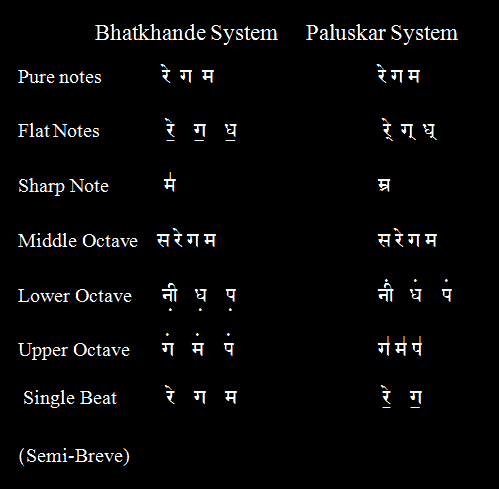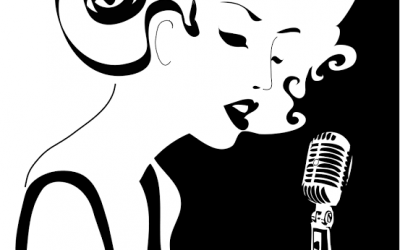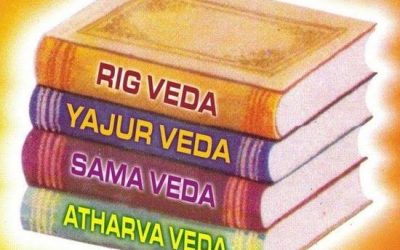INDIAN NOTATION METHOD IN MUSIC
When a poem or song is played with the speed with its swaras and taal (rhythm)its written description, is called Notation.
In ancient times, India had a lyrical system existing around 250 BC, i.e before the time of Panini many notations were existing, but then this pattern was in its infancy, and at that time there were distinctions and rhythms of intense and soft notes.
Due to the absence of tivra – Komal swara’s signs and the absence of taal, maatra, volume, meedh etc., music for those students are unable to take advantage of those notations.
In ancient times, there were other reasons for the lack of development of the notations; For example:
- At that time, music – art was especially in practical form, i.e, students used to learn only after listening from the mouth.
- Writing-system and printing-related facilities at that time were not the same as today.
- The ragas were remembered by mouth (oral).
- Music was the practice of teaching or memorizing the disciple from the guru. Gurus of ancient times did not tell their art by writing to their son or even to the trusted disciples but only liked to teach (sit in front of) on one to one basis verbally.
Notations for students were made to start from 50-60 years back, whose credit goes to two great legends –
1. Vishnu Narayan Bhatkhande
2. Pt. Vishnu Digambar Phaluskar.
Mr Bhatkhande hid behind the curtains with great tact and skill. Secretly heard his singing and prepared the notations and many of the notations were also prepared by gramophone-records.
Thus he made notations of several thousand things. He paved the way for music students by publishing them in a ‘Serial Book – Malika’. Similarly, Pt. Vishnu Digambar Paluskar also prepared many books. Paluskar ji’s script – the method which was initially introduced by him, has now undergone some changes.
Vishnu Digambar Notation – Symbol
- Swaras with no sign above and below are considered pure mid-octaves; For example Re,Ga,Ma,Pa.
- Swaras undergone with signs, are considered komal or vikrit swaras. For example- रि् , ग् , ध
- Tivra or Vikrit mathyam with opposite marks is shown this way For example – Ma.
- The swaras with up pointed signs are known of the mandra/medium- saptak. For example – .Pa, .Tha, .Ni
- Swaras which have standing lines on them , those are considered higher octave swaras . For example – Sal Rel Gal Mal
Following are the signs given to swara’s Quantity:
× Four Maatra , for example {Sa×}
~ Two Maatra , for example {Sa~}
-One Maatra, for example {Sa-}
°Half Maatra , for example {Sa°}
)¼ Maatra , for example {Pa}
)) ⅛ Maatra , for example { Ma }
- For pronunciation Avagraha -sign(~) is used and the point (‘) is used to prolong the stagnation of the letters of the song. For example, Ga ss Pa , Ra••Ma
- If ⅓ or ⅙ is written under the swara then in one Maatra , 3-6 swaras are spoken.
- If any other swara is written on top of a swara, it is used as a particle note.
- Put 1 sign for the taal of sam, One swara is used , for empty rhythm ‘+ ‘ sign is used; for other khaalis , uniform numbering or rhythms are used to count.
Bhatkhande Notation – Symbol system
- swaras under which there is no sign above, they are called ‘pure swaras’, like – Sa re Ga,Ma
- The swaras under which the horizontal line is drawn are called ‘Komal swaras’ ‘; Like – Re Ga dha Ni.
- For identification of tivra Ma , a standing line is drawn upside Ma. For example Ma l
- Downside dotted swaras are considered to be swaras of lower octave. For example – Ma. , Pa. , Tha.
- Upside dotted swaras have been considered to be swaras of higher octave , for example – Ga° , Re° Sa°.
- Undotted swaras have been considered to be swaras of middle octave , for example – Pa , Ma , Ga.
- The number of words of the song which is in front of this (S) sign , the same word’s quantity will be increased with the same number. For example Shyassm
- The swaras which have this(-)sign above them, similar numbers of quantities are increased. For example Ga—
- This symbol { _ } is used to play many vocals in one volume. For example PaMaGa and ReGaMaPa .
- The symbol upside swaras is called meedh.All the swaras having this symbol will collectively form meedh.
- If a swara is given over a swara, it should be considered as ‘karn swara’. For example, the song has to be sung or played using Pa while touching Ga a little.
- The vowel which is closed in brackets should sing in this way – first the swara after it, then the swara which is closed in brackets, then the vowel preceding it and then the same bracket swara. That is, four swaras will be sung in one volume, for example – (Pa) = Tha Pa Ma Pa
- This is the (×) sign of showing evenness in a rhythm.
- A zero sign (0) is used for khaali
- Assuming ‘sam’ the first taali is used for other taalis, orderly 2-3-4 numbers are applied accordingly.
- The act of agitating the swara in the instrument is called ‘jamajama’.
- The two dotted swaras below are of the superficial lower octave; Like – Ga.. Sa.. Ma..
- The two pointed vowels above are of extreme higher octave; For example Ga Sa Ma
.. .. ..
- Where there is a sign of * flower,quantity should be silent there.
- Where there is a sign of comma, stay a quantity/maatra
Read Others Information Visit Our Blogs





0 Comments